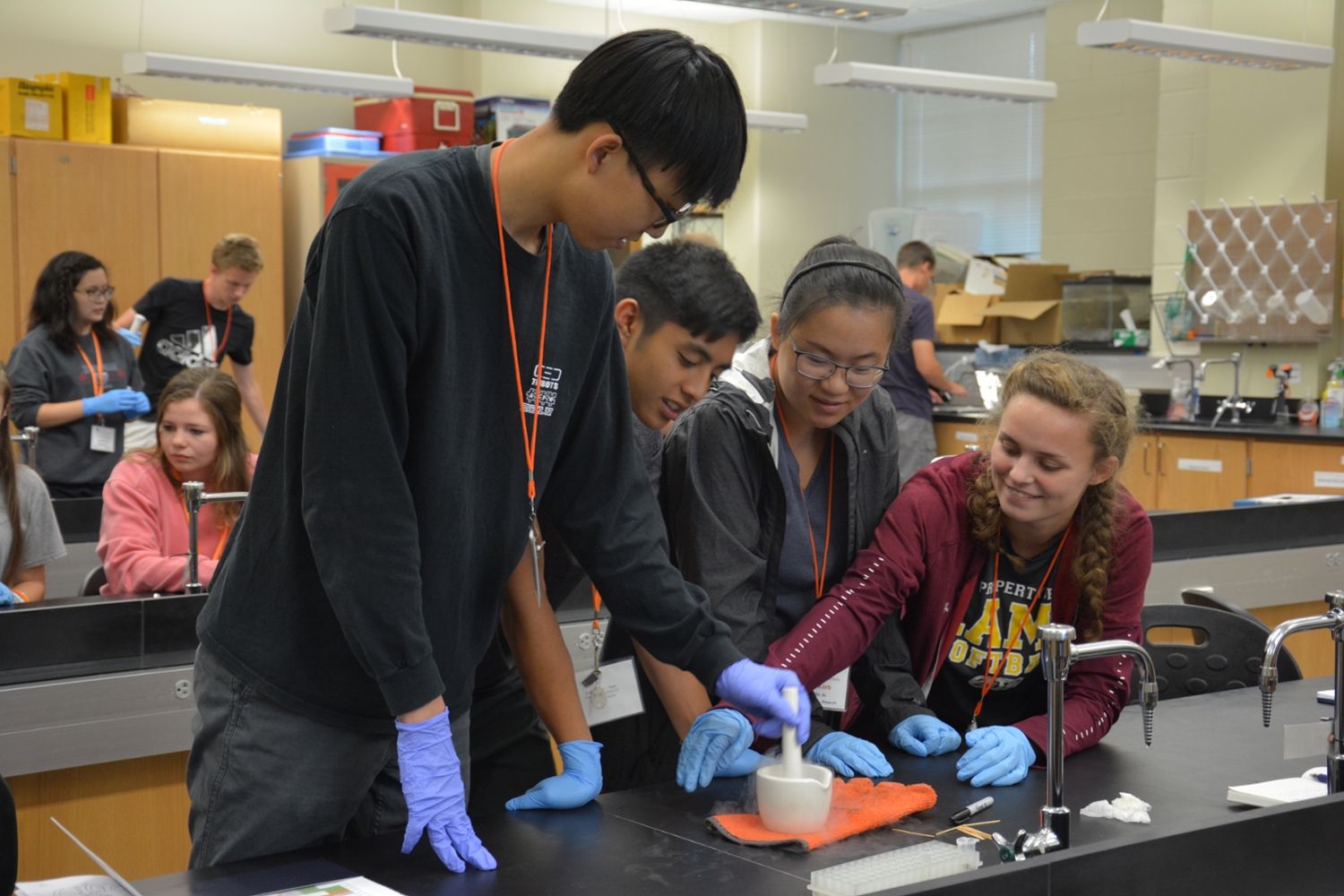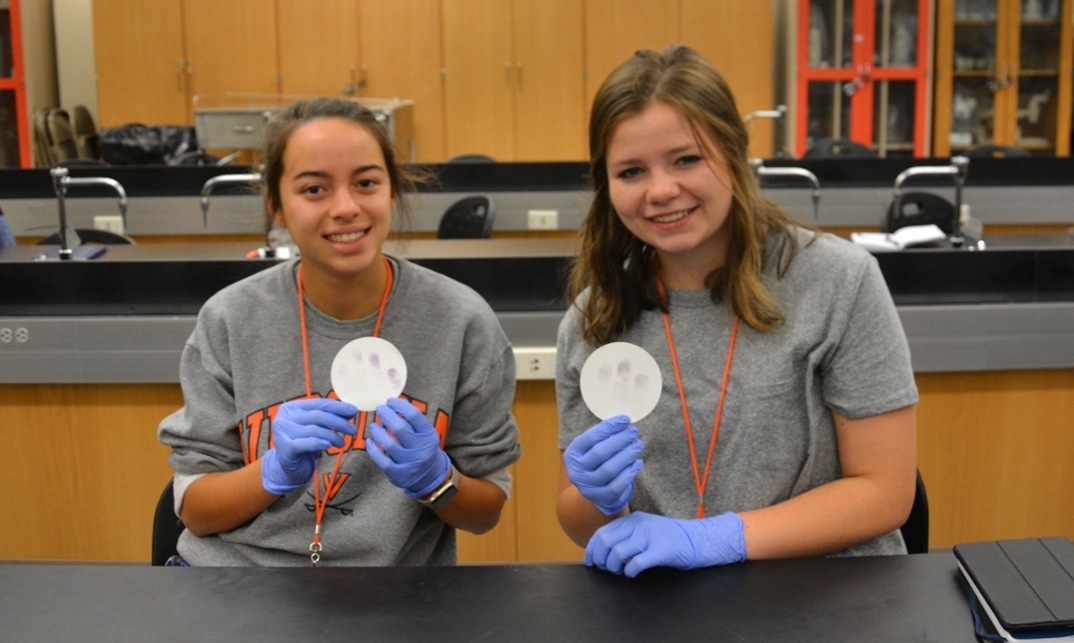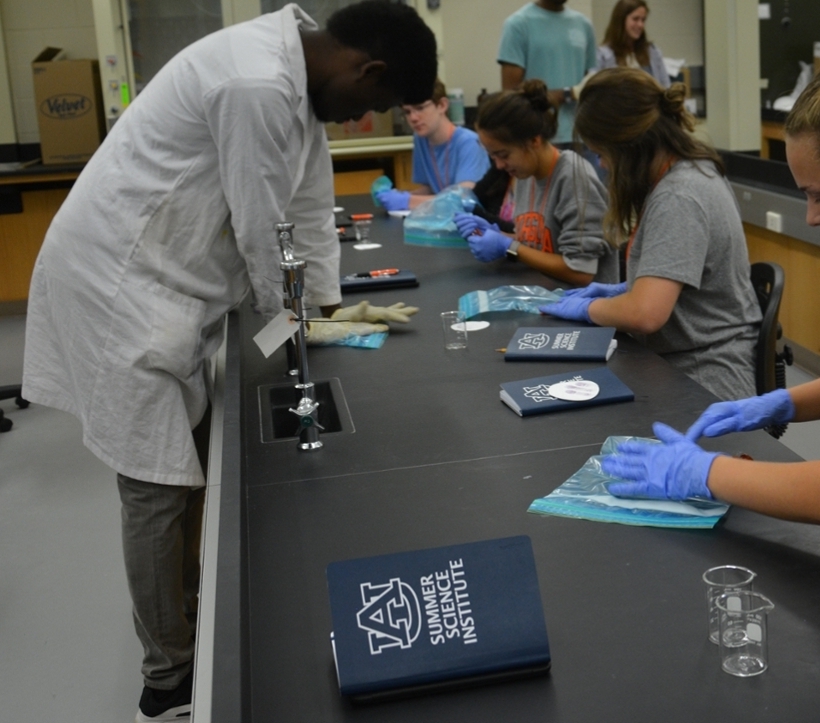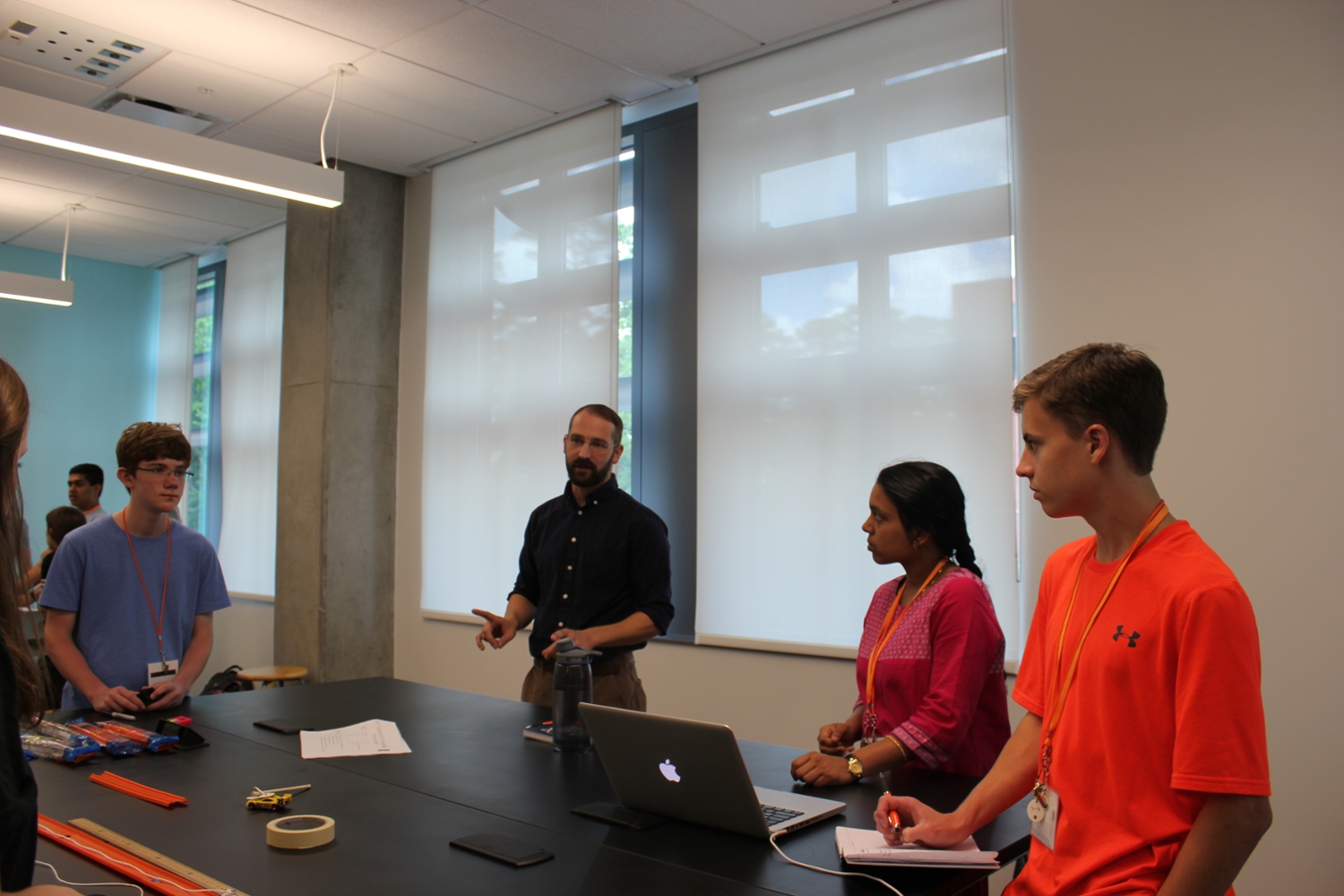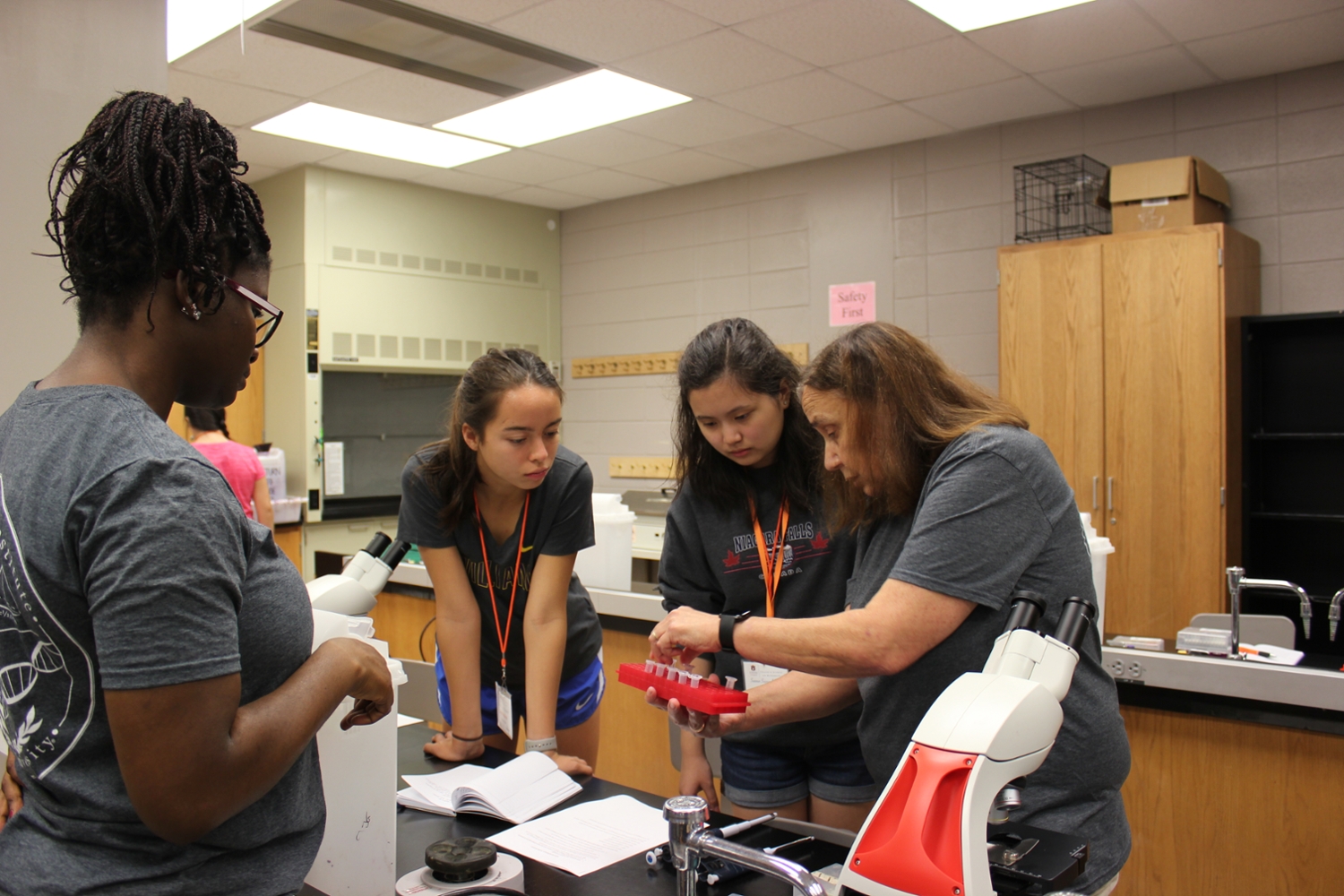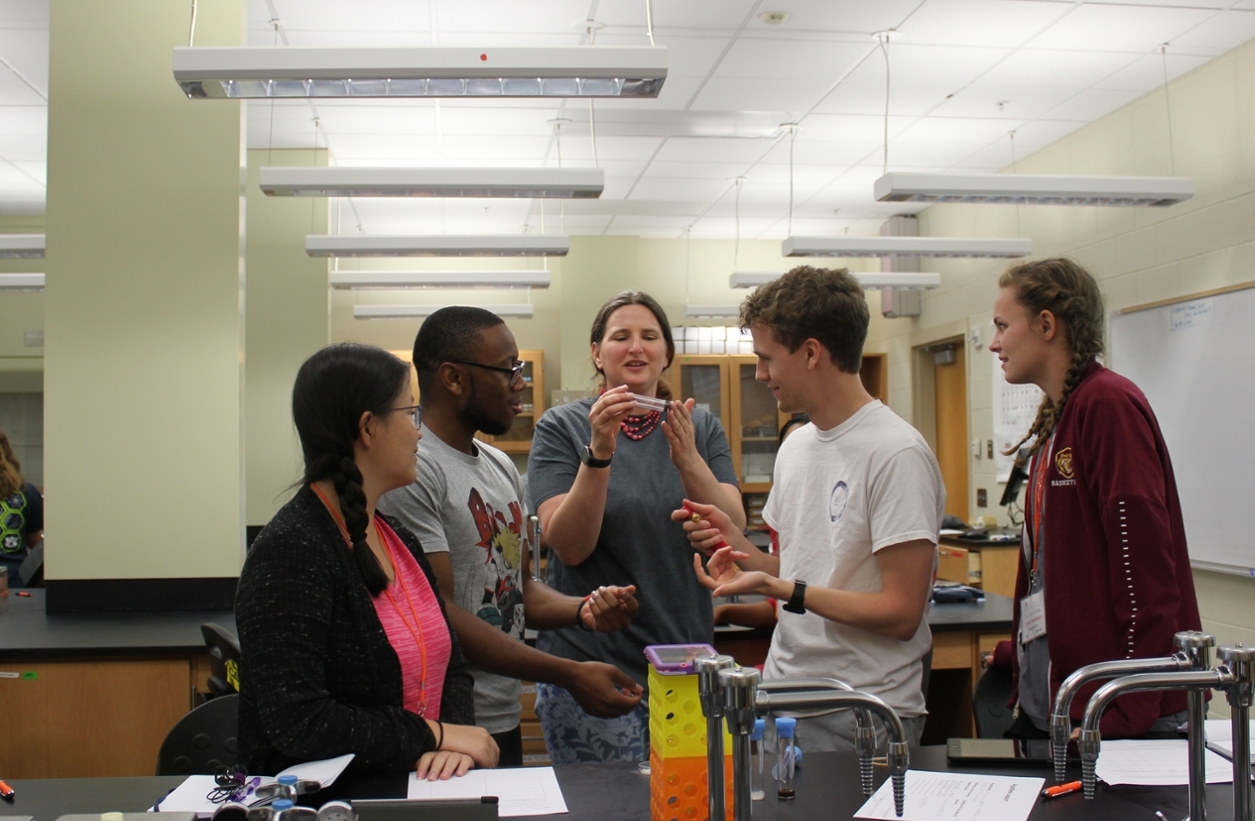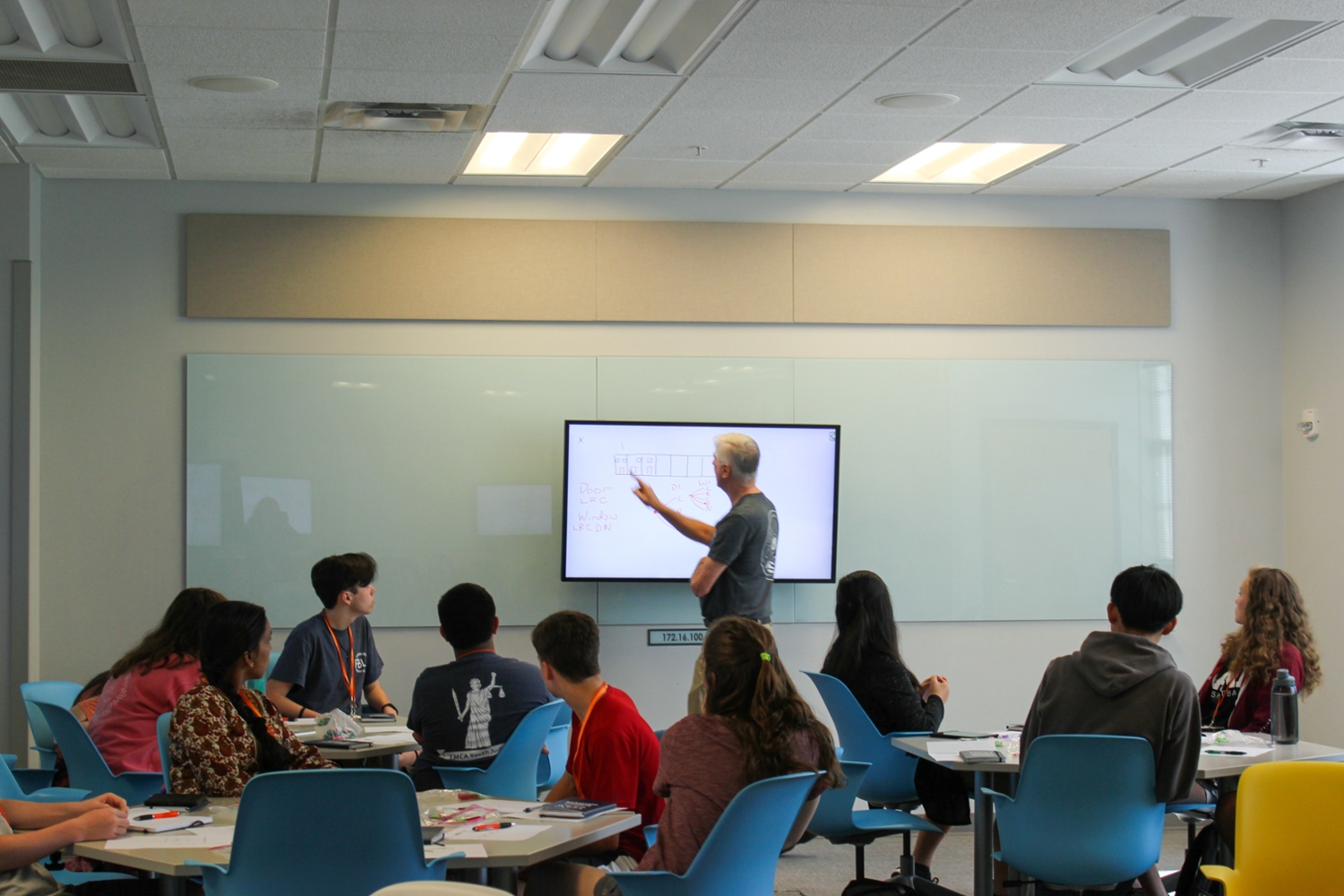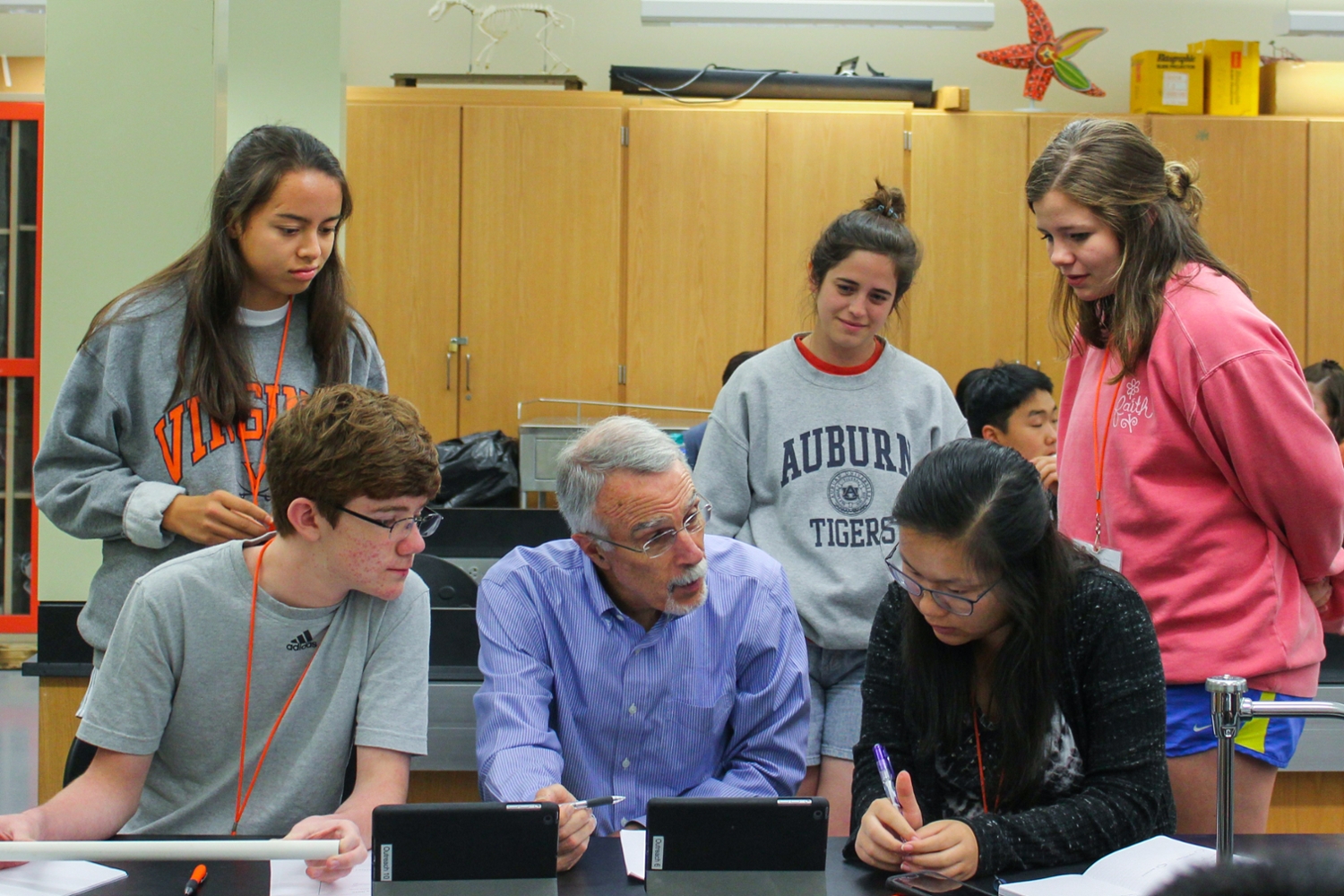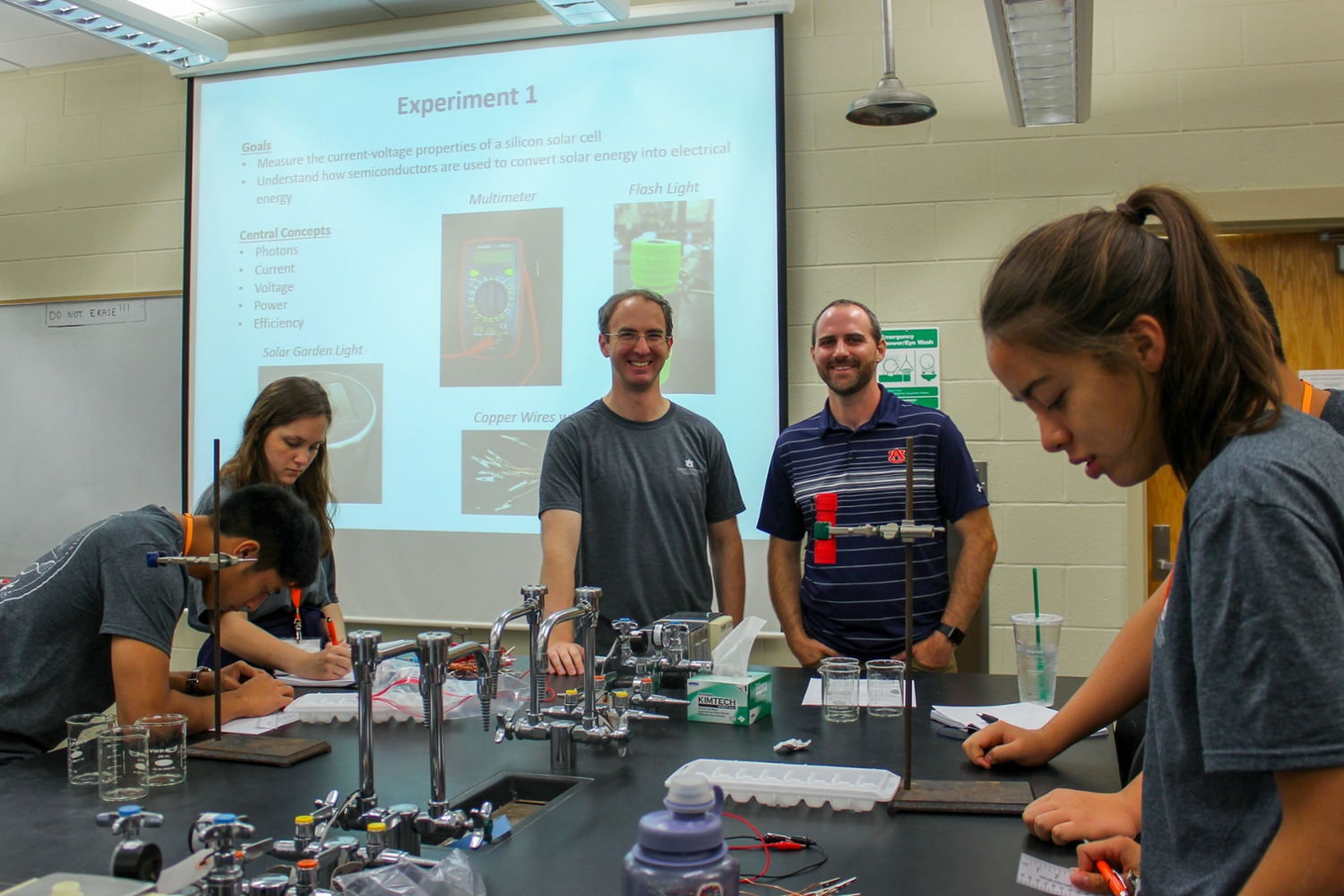COSAM News Articles 2019 June High School Students Gain Hands-On Research Experience through the Summer Science Institute
High School Students Gain Hands-On Research Experience through the Summer Science Institute
Auburn University's Summer Science Institute presented by the College of Sciences and Mathematics (COSAM) provides high-achieving 10th and 11th grade students with an opportunity to learn from researchers and conduct experiments in the same labs that Auburn University students use.
The competitive application to participate in this week-long program includes an application, essay, test scores and letters of recommendation. The students who are selected live on campus for the entire week of the program.
This year, faculty and graduate students from COSAM made an impact through multiple areas of science with experiments that have real-world applications. The topics included a different array of projects including:
Isolating DNA and Identifying a Particular Gene
Students used liquid nitrogen to aid in grinding samples of corn chips, organic corn chips and corn plants. They mixed these substances with a buffer and chloroform, and then placed the samples in a centrifuge to isolate the DNA. They analyzed the items to determine if transgenic materials exist in the samples.
These students learned about the process of creating Genetically Modified Organism (GMO) and completed experiments to see if regular commercial corn chips and organic chips contained these transgenic materials. Both types of corn chips contained GMO while the corn plant did not.
Forensic Science
Students pressed their fingers on paper to capture their own amino acids. After processing these samples in a solution, they then were able to uncover the unique patterns of their fingerprints during this experiment.
Two students are seen to the right holding their dried fingerprints on paper.
The class discussed how this type of science can be used and what specific careers need this background including positions in crime laboratories.
Extracting Batches of DNA
Students crushed strawberries to extract their DNA and actually see the DNA molecules clumped together. The students first smashed the berries to break down the cell walls, used a simple dishwashing soap as a buffer to release and separate the DNA, filtered this material and then extracted a large amount of DNA using cold ethanol.
The students were able to see large batches of DNA grouped together from this experiment and compared the total amounts in different samples. They discussed the different methods DNA can be sampled and how this technique can be used in projects as well as in a variety of careers.
BioPhysics
Students learned about biophysics from Dr. Michael Gramlich. He shared with these high school students the connection between biology, chemistry and physics.
During this session, students created a model of a synaptic vesicle that traveled between two synapses with tracks and model cars. Students had to set measurements and record the time between set points.
Students learned the importance of taking notes during their experiment and were encouraged to ask questions to help them solve the problem.
Afterwards, they took a tour of the new Leach Science Center including a guided tour of the research laboratories.
Preparing Samples and Using Microscopes in a Lab Setting
Gaining experience using a variety of items in the lab, students prepared blood samples by swiping slides and treating the samples to be viewed under microscopes. Dr. Mary Mendonca gave students advice on how to prepare samples and how to use this equipment most effectively.
Students also looked at samples of Chytrid spores in multi-well slides. This fungus is currently affecting global amphibian populations. Students had opportunities to view native species in nature on a previous night at Tuskegee National Forest.
Observing Patterns of Behaviors
Students used their mobile devices to record video of fruit flies. In this experiment, they had the opportunity to observe behavioral patterns and record the data in an online spreadsheet.
Dr. Rita Graze shared with the students insight about the behavior of the flies and what types of behaviors they could expect to see.
Students could then see the median, standard deviation and graphs, and compared it to their data collected by the teams.
Discrete Mathematics
Dr. Chris Rodger shared insight about the curiosity of mathematics in the Engaged Active Student Learning (EASL) Classroom in the Sciences Center Classroom Building. He worked out problems on the interactive screens in the EASL Classroom and helped students find the answers through thinking through the missing elements.
Dr. Rodger spoke about solving problems in the workplace such as having a job where you have to sort through a large amount of information. He explained how a strong background in mathematics can help students excel in their future careers.
Physics of Music
Dean Giordano presented an interactive session where students made flutes using the physics of sound to determine where to the place the holes in the instrument. He shared the fundamental properties of sound waves and how a flute makes a musical tone with a pitch determined by the locations of the holes. They also learned about the mathematics of how the tones in a musical scale are related to each other.
The students calculated where to place the holes and tested their instruments by using an iPad app to measure the frequencies of the tones produced by their flutes.
By the end of the session students were able to produce musical notes on their flutes and play simple melodies.
Understanding the Science Behind Solar Energy Conversion and Storage
Dr. Ryan Comes and Dr. Byron Farnum gave students the opportunity to work with solar cells and batteries in a series of experiments discussing their fundamental chemical and physical concepts.
Dr. Farnum explained the storage and transportation of solar energy to students with applications including residential solar energy models and large, grid-scale solar energy farms.
Dr. Comes talked about the electromagnetic solar spectrum and different types of semiconductors used to harvest solar energy. He discussed the balance between the efficiency of solar cells and producing solar cells at a lower price point. Students learned about his research and connected it with what they saw when they toured his lab in the Leach Science Center earlier in the week.
Students used a variety of tools during their experiments to see how solar cells are made and how they function in different environments. Students then constructed Cu-Zn batteries to understand concepts of electrical energy storage and power consumption.
Latest Headlines
-
04/23/2024
-
04/18/2024
-
04/18/2024
-
04/18/2024
-
04/17/2024

